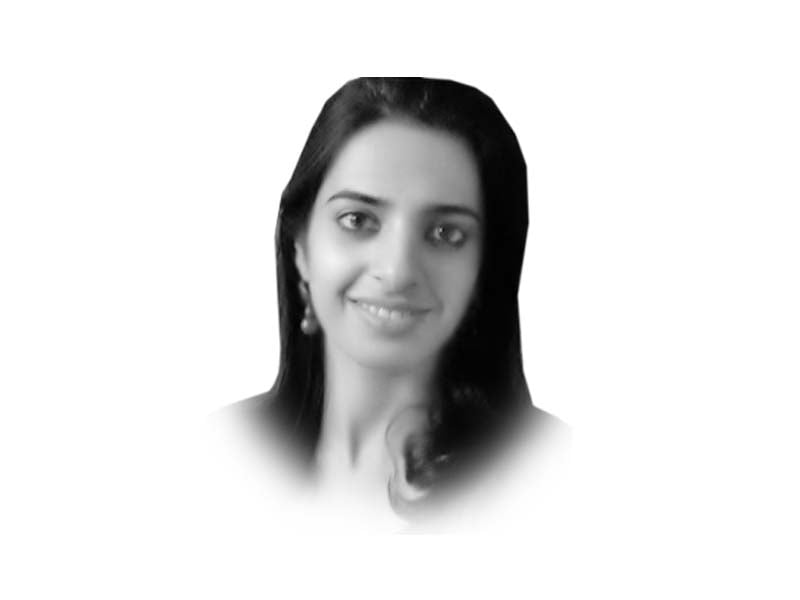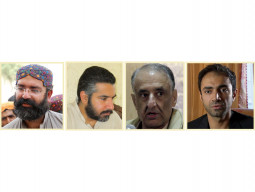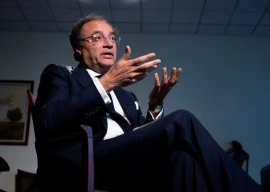
The Dera Ismail Khan jailbreak on July 29 was astounding for so many reasons, chief among them the sheer scale and the violent competence of the operation, and the complete lack of a meaningful defence. Not content with freeing almost 250 prisoners, the 150 Taliban attackers also brutally slit the throats of four Shia prisoners. How does Pakistan rid itself of these militant monsters and eliminate support for them in the population?
This is the million dollar question. The answer remains as elusive as ever and depending on who you ask, it varies: military operations, talks with the militants, economic development, more jobs. More education is, perhaps, the most commonly heard refrain, from policymakers in Pakistan to those in the West. Punjab Chief Minister Shahbaz Sharif recently stated that his Punjab education sector road map, which has targeted increased enrolment and teacher and student attendance, “will comprehensively defeat terrorism and militancy”.
Surprisingly, however, researchers have used data and evidence across multiple contexts and shown that this conventional wisdom does not stack up. First, militants do not seem to be less educated than their surrounding population. Second, the quantity of an individual’s education, measured in years of schooling, appears to be unrelated to his or her support for terror groups and terrorism, measured using public opinion surveys. Clearly, just getting all our children to go to school, and as many of them up the schooling ladder as possible, while essential, is not alone going to eliminate militancy in Pakistan. But our gut still tells us that a sensible and high quality education should be part of the answer. To understand how education might enable us to win over radicalised hearts and minds, we need to take a good look inside the black box of schooling. Two not entirely mutually exclusive things matter: one, that students who go to school actually learn, and two, that the content they learn is sound and tolerant. Both things have historically not happened in the Pakistani context.
The 2009 Learning and Education Achievement in Punjab Schools (LEAPS) Report found that at the end of grade three, less than 20 per cent of students could read a first grade-level paragraph in Urdu. What’s going on? This situation is not unique to Pakistan and MIT development economists Abhijit Banerjee and Esther Duflo offer a number of causes in their recent book, Poor Economics. Part of the problem is low expectations from poorer students: teachers expect little from these students, poor families expect little from their children and the students undermine themselves. There is a vicious cycle at play: everyone believes poorer students will not learn and thus they don’t.
Another issue is that the content students are learning is aimed at preparing for board examinations, and not on learning the basics and building core competencies. When some students start falling behind, the teachers don’t focus on making them learn and instead focus on the good students. Banerjee and Duflo’s somewhat controversial solution is two tracks of schooling in which the lower track also comes out having learnt a basic curriculum, instead of having learnt essentially nothing.
Second, it is no secret that for at least two generations, our national curriculum has been biased and has bred intolerance. The 2003 SDPI report titled, “Subtle Subversion”, edited by AH Nayyar and Ahmad Salim, found that the curriculum was historically inaccurate, encouraged “prejudice, bigotry and discrimination towards fellow citizens, especially women and religious minorities, and towards other nations”, and glorified war and the use of force. Little wonder, then, that the population has become increasingly radicalised in these last two generations.
Fortunately, the revised national curriculum of 2006 seems to have addressed some of the above concerns. The new curriculum emphasises the teaching of life skills and using creative thinking, application and analysis, instead of rote memorisation. However, implementation has been delayed almost seven years: textbooks and lesson plans based on this national curriculum have just come out for the 2013-2014 academic year. This new policy should yield learning dividends. What is less clear is how much of a difference we will see in content, given an unsurprising pushback on content changes. An analysis of the brand new textbooks will help us shed light on this exact question.
Published in The Express Tribune, August 4th, 2013.
Like Opinion & Editorial on Facebook, follow @ETOpEd on Twitter to receive all updates on all our daily pieces.
COMMENTS (19)
Comments are moderated and generally will be posted if they are on-topic and not abusive.
For more information, please see our Comments FAQ





























































@ModiFied:
Punjabis used to take pride in speaking urdu in old times because it was important at that time for employment purposes but with the increasing awareness about the usefulness of english, more and more people are getting away from urdu, and english is going to become the language of prestige in punjab in near future. This is how punjab works.
@ModiFied: . There is not much difference between Hindi and Urdu except the alphabets. . There is a Huge, Humongous Difference between Hindi an Urdu. In the Audio Urdu News I cannot understand "Usnay Wazifay kay Ijafay kay Istiqlaal mein Istiqbaal daal Diya" OR WORDS TO THIS EFFECT! . You may have a point if you compare Hindustani with Urdu. Normal Urdu had a Persian Base with some Arabic and Turkic Words, but, now since the times of the late Zia ul Haq "Pakistani" Urdu has been very heavily Arabized. . Hindi, as you will note is based on Sanskrit whereas Urdu has a Humongous Content of Persian, Arabic and possibly Dardic and Turkic. In fact the word URDU is of Turkic Origin and means Camp or Lashkar or Camp Language! . Cheers
@ gujranwala789: "The reason for extremism in pakistan is urdu language and extremist literature which is mainly available in urdu language. Urdu language for me is synonymous with backwardness, extremism and irrational behaviour. Just have a look at urdu news papers and urdu news channels they are the biggest source of spreading irrationality and extreme thoughts. If we want to get rid of extreme behavior in pakistan , we need to shift our education to more rational language like english."
Should one laugh or feel pity at your understanding? For the first time I am hearing someone blaming the language for extremism. Epicenter of extremism in Pakistan is Punjab where people take pride in speaking Urdu over their mother tongue Punjabi. There is not much difference between Hindi and Urdu except the alphabets. Are you blaming the alphabets for extremism in Pakistan ? If so, then even Sindhi, Pashtu and other languages use the same Arabic alphabets. Even Pakistani side Punjabi is written in Arabic alphabets.
The reason for extremism in pakistan is urdu language and extremist literature which is mainly available in urdu language. Urdu language for me is synonymous with backwardness, extremism and irrational behaviour. Just have a look at urdu news papers and urdu news channels they are the biggest source of spreading irrationality and extreme thoughts. If we want to get rid of extreme behavior in pakistan , we need to shift our education to more rational language like english.
Good article and some thoughtful comments from other readers. Is it possible that we have an entire generation that did not receive good education and these individuals have now reached a stage where they don't see the value for good education? It requires an "educated mind" and not "education" to be able to make the right choices in life. How do we increase the number of "educated minds" to then address the question of militancy and its eventual eradication.
Have any of the scholars considered adult education programs for those who missed out on getting good education. The author is making the assumption that every parent would be just as eager and anxious to get the kind of education the author is proposing.
I believe given the appropriate circumstances any one can become a suicide bomber...an "educated mind" not education will convince one to take that route or not. Basic education can indeed provide a good "educated mind" and this basic education can be provided with the teacher and students sitting under a tree with no classroom facilities...right?
@mirza The 911 attackers were highly educated and many had lived in western countries. . In the old days in the 19th century and even 20th century before the coming of the printing press , newspapers, television, internet, and school curriculums many Muslims lived lives that would be considered "Hindu" in our intolerant times. The process of total conversion took hundreds of years but the modern tools of communication have greatly speeded up the process. Although not invented by us these inventions have become the tools of indoctrination and radicalization. The illiterate in the old days they learnt with their own eyes. Maybe they were more educated.
@lalagee: "et,,dont sensor" +++++++++++++++++++++ Pls write 20 times Censor and not Sensor:).
@Nadir: You Sir, have made a good point which is strengthned by Murtaza Haider's ( Toronto based academic ) article in daily Dawn where he draws attention to a European Parliament Report on ' The involvement of Salfi / Wahabbi's in the support and supply of arms to rebel groups around the world '........in which mention is made of KSA, UAE and Qatar in rather unflattering terms. Having said that I must admit the the author has a very valid, sound argument in her favour.
Very good article and impressive analysis. In fact it is not the volume of books or number of years dedicated to schooling which matters to create a just society. What matters more are the 'values' we try to present before students. Vision for the future of society actually drives education and the interests which are dominant in determining the future exert more power. In this context the power structure of a society pushes for a certain type of curriculum. Liberal education is not possible without having the groups who support such education in power and critical thinking cannot be taught on schools if dominant interests do not tolerate it. In addition, the poverty and education link is also very interesting and reminds me of what is called 'Pygmalion effect' - poor (or anyone for that matter) return you what you expect from them.
"How does Pakistan rid itself of these militant monsters and eliminate support for them in the population?" -- I bet ISI that created these "militant monsters" would like to disagree. Perhaps the author does not understand the nature of the Pakistani state therefore I will give her the benefit of the doubt. However, no sane state feels vindicated when they can successfully divert attention from militant organization cohabiting their land by calling them non-state actors. In more civilized countries where there is a rule of law, these non-state actors are actively hunted down and prosecuted. Also, in general, in countries that are serious about terrorism, or who are fighting terrorism, terrorists like Osama Bin Laden do not build 3 floor houses there, but that cant be said about Pakistan. Therefore, the entire premise of this article is no beyond pointless that its a waste of time even to respond to it. But then its Sunday morning and there is not much else fun things to do right now. Have a nice day!
A very sketchy article that says very little and skirts the substance of the problem.
Basically Pakistan has been destroyed by corrupt and non-visionary establishment, security establishment and politicians. While; the world peace and prosperity has been hijacked and destroyed by the US and Allied. Power politics is the dirtiest game in their hands.
an indian economist........
These Indians are everywhere in the world......whereever u go in any thinktank anywhere u will find these indians......and on the other side u will find a pakistani reading and reciting a holy book.........so difference will always be there weather its a school education or madarssah education..
et,,dont sensor
There certainly is a direct connection between education (not religious) and terrorism. To start with educated mothers do not usually raise suicide bombers. In addition how many suicide bombers had high degrees? On the other hand the hopeless youngsters become the foot soldiers of terrorism. The only solution is educate all women but mullah and our mentality does not allow it. Even in the long era of moderate Mush he did not do much to make women's education mandatory..
Extremism in Pakistan has nothing to do with education or lack of it. Religion is the root cause of all problems. Everything else flows from there. Go back to pre-1947 when there was no Pakistan and Pakistani education system. Western educated people like Jinnah used religion to divide India. There is simply no way to address the problem unless one looks at the root cause. Forget about Kashmir, even if whole India becomes Islamic and merged with Pakistan, problem will still continue. Extremism in Pakistan is reaching to a make or break situation now. Its up to the Pakistani elders to sit down and analyze the real issues. School education is the last thing in my view to look as the main problem. Problem is in mosques and army barracks.
interesting article, though very similar to an earlier in Dawn Roots of terrorism by @mrsultan713: http://dawn.com/news/796177/the-roots-of-terrorism-2
I think there is a fallacy in your information, the militants slit the throat of only one of the shia prisoners as reported in all the international media, the other shia prisoners were shot dead.
Who cares about link between education and militancy? These are all foreign funded agents who are up to mischief to defame Pakistan before a western audience.